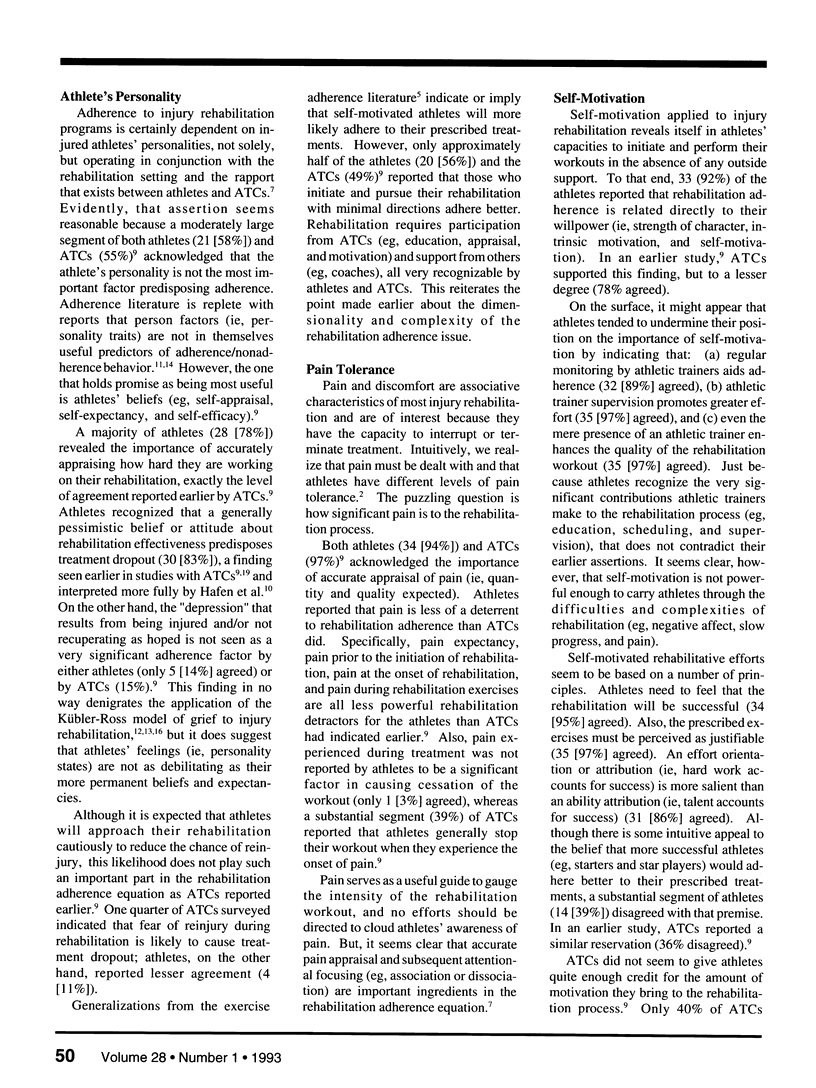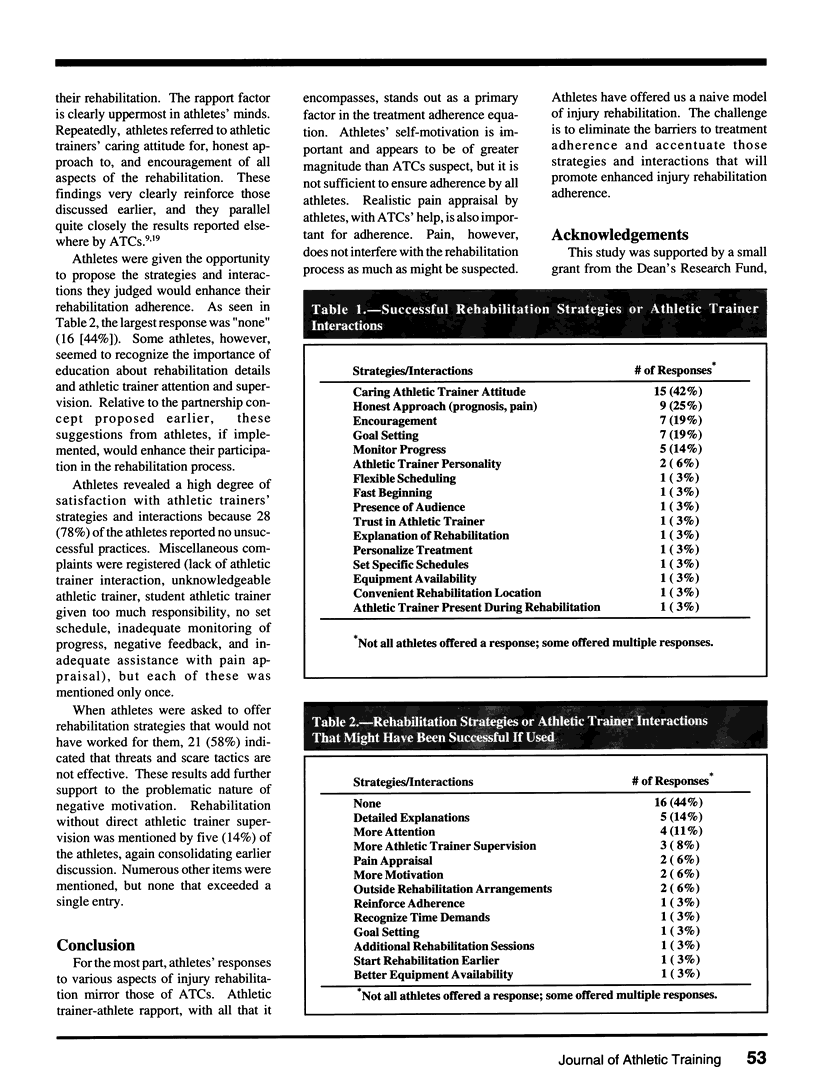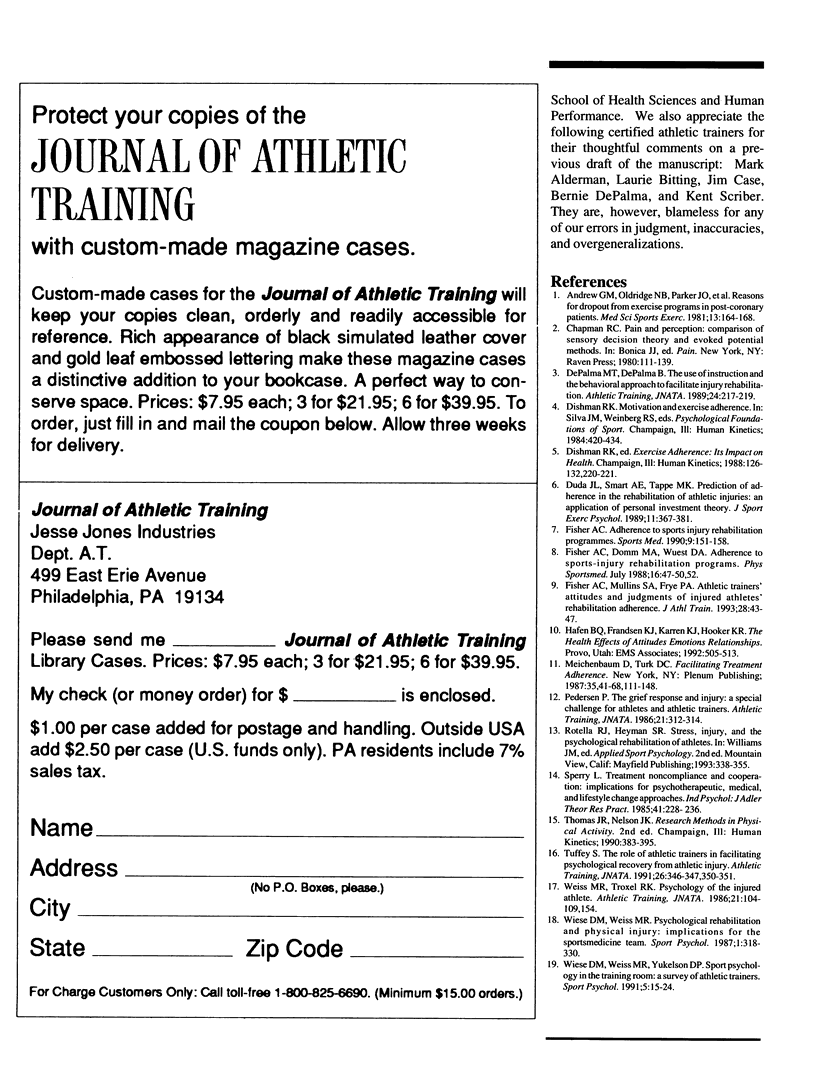Abstract
In a follow-up study to certified athletic trainers' (ATCs') attitudes and judgments toward injury rehabilitation adherence, previously injured and rehabilitated athletes (n=36) were administered the Athletic Injury Rehabilitation Adherence Questionnaire. The purpose of the study was to compare the results collected from athletes with those collected previously from ATCs. The questionnaire consisted of 60 statements, categorized into seven scales: athletic trainers' influence, environmental influences, athlete's personality, pain tolerance, self-motivation, goals and incentives, and significant others. Four additional open-ended questions dealing with successful and unsuccessful rehabilitation strategies also were completed. Athletes' responses were generally similar to those of ATCs. Factors deemed significant to rehabilitation adherence were: (a) good rapport and communication between athletic trainers and injured athletes, (b) support from athletic trainers and coaches, (c) self-motivation on the part of athletes, and (d) convenience, accessibility, and flexibility of the rehabilitation facility and staff. The greatest deviations between athletes' and ATCs' responses were in the areas of self-motivation, pain tolerance, education about injury and rehabilitation exercises, and degree of realistic feedback. Analyses of open-ended question responses reinforced the aforementioned results. The strongest findings derived from these questions were the importance of rapport, communication, and support to rehabilitation adherence. Also, athletes' distastes for threats and scare tactics were quite evident.
Full text
PDF





Images in this article
Selected References
These references are in PubMed. This may not be the complete list of references from this article.
- Andrew G. M., Oldridge N. B., Parker J. O., Cunningham D. A., Rechnitzer P. A., Jones N. L., Buck C., Kavanagh T., Shephard R. J., Sutton J. R. Reasons for dropout from exercise programs in post-coronary patients. Med Sci Sports Exerc. 1981;13(3):164–168. [PubMed] [Google Scholar]
- Chapman C. R. Pain and perception: comparison of sensory decision theory and evoked potential methods. Res Publ Assoc Res Nerv Ment Dis. 1980;58:111–142. [PubMed] [Google Scholar]
- Fisher A. C. Adherence to sports injury rehabilitation programmes. Sports Med. 1990 Mar;9(3):151–158. doi: 10.2165/00007256-199009030-00003. [DOI] [PubMed] [Google Scholar]
- Fisher A. C., Mullins S. A., Frye P. A. Athletic trainers' attitudes and judgments of injured athletes' rehabilitation adherence. J Athl Train. 1993 Spring;28(1):43–47. [PMC free article] [PubMed] [Google Scholar]




